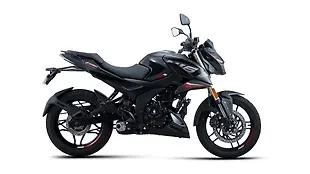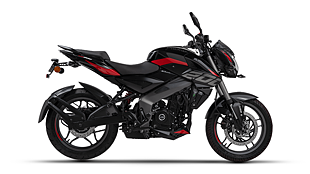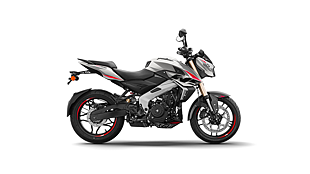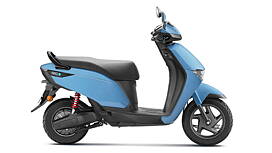
Spy pictures and speculations of the upcoming Bajaj Pulsar CS400 have been making rounds on the internet almost every week. We did also spot the Bajaj flagship being tested recently and came back spotting these new revealing details.
Triple-spark tech – As we clearly spotted the triple-spark logo on the engine casing of the upcoming CS400 while it was on test, it is highly likely for the naked cruiser to feature it. The engine will be almost identical to the KTM 373cc engine leaving aside the triple-spark tech bit similar to what Bajaj had done with the KTM 200cc engine for use in their motorcycles. The motorcycle will be fuel-injected which means there won’t be a significant power loss. To put into perspective, the KTM Duke 200 makes 24.6bhp while the RS200 makes 24.2bhp. However, since the CS400 is being developed to be a cruiser it will be tuned towards being more torque focussed.
Nitrox rear shock absorber – As seen on the test mule, the motorcycle will likely feature a Nitrox rear shock and not feature the 10 step adjustable WP one seen on the Duke 390. The gas charged Nitrox monoshock will be set up more towards comfort than performance riding.
MRF REVZ FC1 C1 tyres - The CS400 we spotted was running the new range of the MRF Revz series. The FC1 and C1 are the new reworked tyres from MRF that comes as standard on the Duke 200 and RC200. These tyres have a slight redesign with more grooves towards the edges. However, we are not sure how it will cope with all the increased power. Comparatively, the Duke 390 and the RC 390 feature German Metzeler tyres.
Conventional forks – Bajaj had showcased the CS400 prototype with upside-down forks however, the numerous spy pictures have showed the motorcycle riding on conventional forks. This significant change could be a result of cost-cutting. Bajaj seems to have gone for skinnier regular forks most likely to save on costs and price it attractively.
Instrumentation – This is one area where Bajaj looks to be living up to their promise, the spied motorcycles have been spotted with the dual screen instrumentation. The additional unit is placed on the tank slightly above the fuel lid almost identical to the positioning on the Ducati Diavel. The screen on the tank displays the speed and the gear position while, the main display features the rpm gauge, fuel gauge and the odometer.
Brakes – The callipers seem to be straight off the KTMs – radially mounted, four-piston units. The front disc however is of the petal type, which has not yet been seen on any Bajaj or KTM motorcycle in India. The CS400 will most definitely feature ABS as the test mule we spotted was going through ABS braking tests.

![Bajaj Dominar 400 [2018] Image Bajaj Dominar 400 [2018] Image](https://imgd.aeplcdn.com/272x153/bw/models/bajaj-dominar400.jpg?20190103151915&q=80)
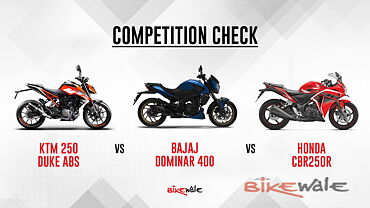

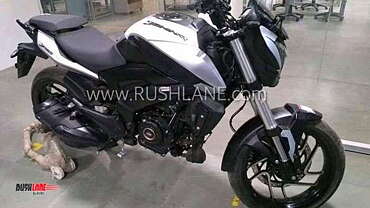
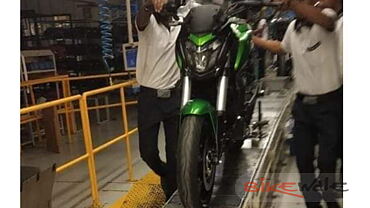
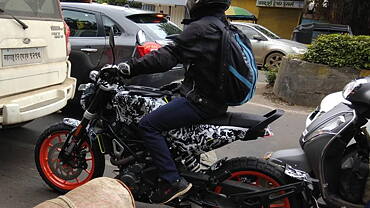
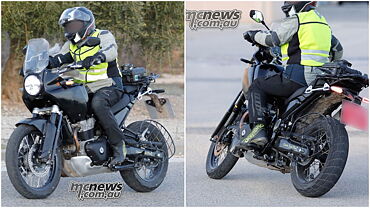
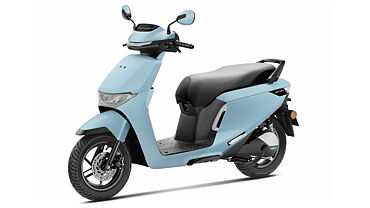
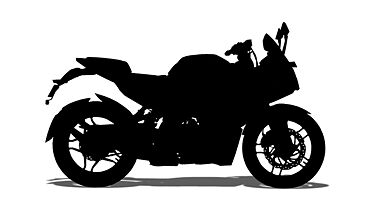

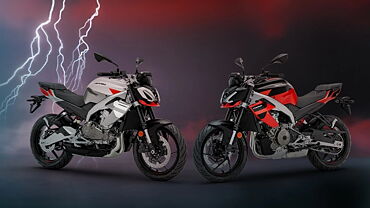

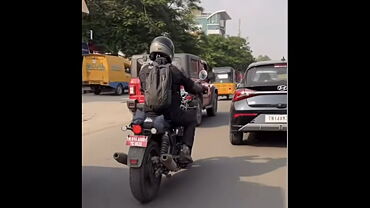

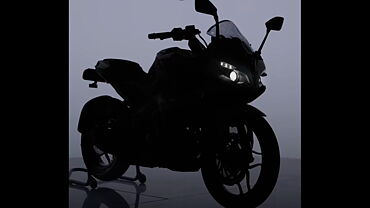

![Bajaj Dominar 400 [2018] Wheels-Tyres Bajaj Dominar 400 [2018] Wheels-Tyres](https://imgd.aeplcdn.com/199x112/bw/ec/26581/Bajaj-Dominar-400-Wheelstyres-87768.jpg?v=201711021421&q=80)
![Bajaj Dominar 400 [2018] Front Three-Quarter Bajaj Dominar 400 [2018] Front Three-Quarter](https://imgd.aeplcdn.com/199x112/bw/ec/26581/Bajaj-Dominar-400-Front-threequarter-87841.jpg?v=201711021421&q=80)
![Bajaj Dominar 400 [2018] Action Bajaj Dominar 400 [2018] Action](https://imgd.aeplcdn.com/199x112/bw/ec/26938/Bajaj-Dominar-400-Action-89804.jpg?v=201711021421&wm=2&q=80)
![Bajaj Dominar 400 [2018] Front Three-Quarter Bajaj Dominar 400 [2018] Front Three-Quarter](https://imgd.aeplcdn.com/199x112/bw/ec/26581/Bajaj-Dominar-400-Front-threequarter-87913.jpg?v=201711021421&q=80)
![Bajaj Dominar 400 [2018] Tank Bajaj Dominar 400 [2018] Tank](https://imgd.aeplcdn.com/468x263/bw/ec/26581/Bajaj-Dominar-400-Tank-87787.jpg?v=201711021421&q=80)
